“He’s definitely our young soldier” – Remembering 2nd Lt Donald I. Gunn
In the course of nearly two decades of researching World War II veterans’ service records and casualties, I have been privileged to work with dozens of clients in Europe, Asia, and the Middle East, along with more than a thousand clients in the US. For several months, I have been working with a Scottish client named Iain, who came to me with a request to research his mother’s cousin – starting with few details and a name which proved to be incorrect.
Iain’s family has a long history of military service, including two grandfathers who saw action in service to the British Crown in France and elsewhere during World War I. Iain’s father served during World War II and Iain himself served six years in the British Army.
Iain’s search began with a photograph which he found in a family album after the death of his father. Knowing the generations of British military service within his family, he was curious about the presence of an American Army officer in their family album. There was no inscription or name on the back of the photo to give any clues. Iain asked his mother, who was in declining health, doubtful of any chance of identifying the slim, handsome young man in the picture. But his mother quickly confirmed the young man as her cousin, giving a full name – first, middle, and last – with the first and middle names both being incorrect, as would become apparent some time later.
Iain’s mother remembered that she had a very young cousin who emigrated from the UK to America in 1913. She remembered vividly the arrival of a telegram from America notifying her grandfather of the death of his nephew, killed in action in World War II, over which he had been distraught. Still, the family only ever received the slimmest idea of what had happened to their young officer, and the surviving generations didn’t even know his full name.
As Iain would later write of his family’s search for this young relative, “2LT Gunn was an only son; his father had died when he was 8 years old. We were on a mission to bring recognition to this young man who had made the ultimate sacrifice for his country. It became very important to us the more we learned of him to ensure he didn’t lie lonely in some foreign field.”
After months of working this case with Iain, I was able to confirm that the young man was Second Lieutenant Donald Iain Gunn. He was killed in the brutal battle for the Japanese-occupied island of Saipan in 1944.
If you are a regular reader of my blog, you will know that most of my stories focus almost exclusively on the lives and deaths of servicemen who became WWII casualties. In this post, and in a few to follow, I want to memorialize some brave men who died for freedom, and also share with you what the research means to my clients who are seeking information on their own family members. The phone calls I have with my clients after they receive their files are always memorable and reflect a real mix of emotions. Letters like Iain’s, below, will show you, more clearly than I can tell you, exactly why I keep doing this work.
Dear Bill,
Re: 2Lt Donald I Gunn O-1325216 … Coy G 105 regiment 27 Infantry Div USGF.
All the documents relating to Donald arrived this morning. He is definitely our young soldier, having pieced together all the information that we had on his life and family. Thank you!
I’m so glad that we’ve been able to locate Donald and preserve his memory for at least the foreseeable future within our family and honour his sacrifice for the wider world and humanity. Donald was disinterred from his grave in Saipan on request from his mother and re-interred in Seattle near where she lived. It must have been a harrowing time for her particularly as Donald was an only son.
I’ve also come to realise the courage and tenacity shown by American troops who fought with Donald against a brutal, ruthless and brainwashed enemy prepared to die regardless and show no mercy. This attitude wasn’t faced by troops in the European Theatre where by and large the rules of the Geneva Convention were generally upheld, even by some Nazis. It’s no surprise how Americans have such high regard for these young men and her military, which, in my opinion, has always been a force for good in a very nasty world.
To be honest, finding out all these details about Donald’s death in service has been quite emotional and upsetting at times, but the realisation that his sacrifice and those of his brothers-in-arms was ultimately not in vain is comforting.
I’m extremely honoured to keep alive his memory and one day in the not too distant future I hope to visit his grave with pride and gratitude.
Again, Bill, many thanks for your efficient and professional service…..
Kindest regards
Iain
The story of Second Lieutenant Donald I. Gunn, an only son.
Donald I. Gunn was born March 23, 1921 in Nebraska, and grew up in Seattle, King County, Washington, with his stepfather, Rudolph W. Peterson, and mother, Maerose Peterson. Both Rudolph and Maerose were the children of Swedish immigrants. Don lived with his parents, since at least 1930, at 520 N. 68th Street. He had no brothers or sisters.
The young man enlisted in the Army in Seattle on August 24, 1942, with one year of college under his belt.
After undergoing the usual rigorous Army training process, he was commissioned as a Second Lieutenant on September 25, 1943.
He was assigned to Company G of the 105th Infantry Regiment, whose next target was the Japanese-held island of Saipan. The island, located in the western Pacific, had been under Japanese control since 1914. The primary product of the island was sugar, but the Japanese also considered it an important military base and built port facilities and an airfield for the use of their army and navy.
The 105th Infantry hit the beach on Saipan on June 16, 1944. Fighting with Marine regiments, the 105th encountered bloody resistance. Some time on June 18th, possibly in the fighting to capture the Japanese airfield on the southeast corner of the island near Magicenne Bay, LT Gunn was killed. The fighting was so desperate in this area that harried Army Graves Registration personnel were unable to determine his cause of his death, and listed him only as “KIA,” or killed in action.
LT Gunn was buried at the 4th Marine Division Cemetery on the island. Conditions remained so chaotic that the date he was buried there was not even recorded. In the sandy soil of that island, he was laid to rest between two Marines, Lovel D. Preece, of Kermit, West Virginia, on his right, and Dewey John Rivet, of Westwego, Louisiana, on his left.
By the battle’s end in July, American losses were dreadful. Two thousand nine hundred forty-nine men were killed; 10,464 were wounded. Virtually the entire Japanese garrison of 30,000 troops was annihilated.
Donald’s few personal effects were gathered for shipment home and they were typical for an infantryman. Among them were his officer’s insignia, a cigarette case, a prayer book, and a pair of sunglasses.
Almost four years after his death, his parents received a form from the Army, asking them for their preference as to his permanent burial location. They had the option of having him buried overseas, among his fellow soldiers, or having him returned home. With either choice, the US government paid all associated costs.
The decision was made to have his remains returned home. The United States, of all the combatants during World War 2, was the only nation to provide this incredible gift to the families of the fallen. And so, his remains were disinterred for shipment home. During the exhumation process, 51 cents, made up of a one quarter, two dimes, one nickel, and one penny, were found on his remains. The military informed his parents that they had found this money, noting that it was “slightly corroded,” and asked them if they would like the funds returned to them. His parents declined, and asked the Army to “dispose of them in any convenient way.”
The body of LT Gunn, along with the remains of hundreds of his fellow servicemen, was loaded onto the Army-manned transport ship USAT Dalton Victory, which arrived in San Francisco in August of 1948. From there, Lieutenant Gunn’s remains were shipped via the Northern Pacific Railroad to Seattle, where he was interred in that city’s Evergreen-Washeli Memorial Park, Aurora Ave., Seatle, Washington.
Lieutenant Gunn was among the more than eleven hundred residents of King County to make the ultimate sacrifice in World War 2. His mother, Maerose, survived him by 30 years, dying on October 16, 1974.
His family remembers him with gratitude for his service and are comforted that he did not die in vain. This researcher and a grateful nation agree.
Images in this post:
2nd LT Donald I Gunn, US Marine Corp. Family photo; used by permission.
27th Infantry Divisin Deployment Map via Hyper War, accessed 12/19/2017 https://goo.gl/images/erkSDx.
27th Division on Blue Beach, Saipan Island. USMC Photo via Iain Richmond.
Burial party, US Marine Corps Cemetery, Saipan. USMC photo via Iain Richmond.
US Marine Corps Cemetery, Saipan, 1944. USMC photo via Iain Richmond.
LT Gunn’s family home, Scotland, circa 1913. Family photo courtesy Iain Richmond, used by permission.
LT Gunn’s family home in Seattle, Washington (photo credit: Keller Williams Real Estate via Redfin listing 300954).
Headstone for Donald I Gunn, Evergreen-Washeli Memorial Park, Seattle, WA, courtesy of Iain Richmond.
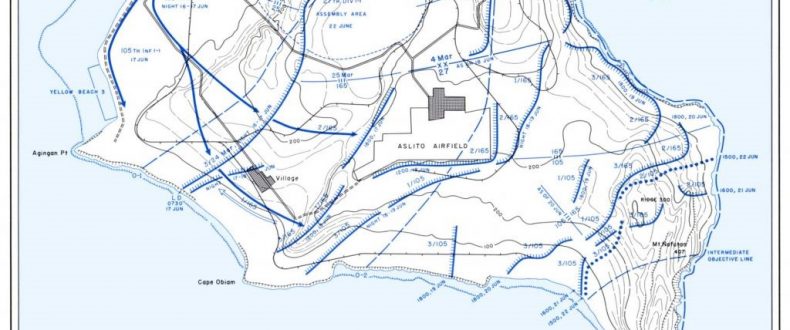
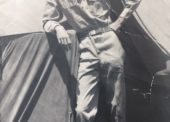
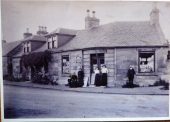
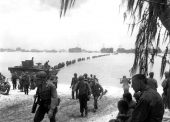
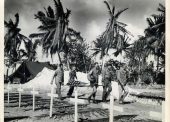
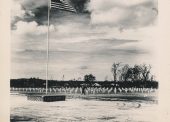



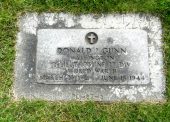
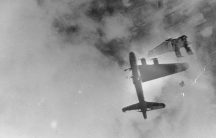
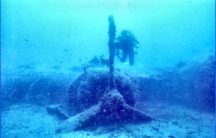
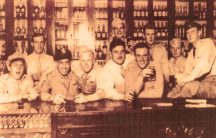
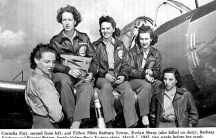
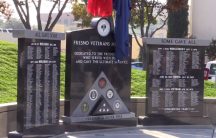

















Ask Bill or comment on this story